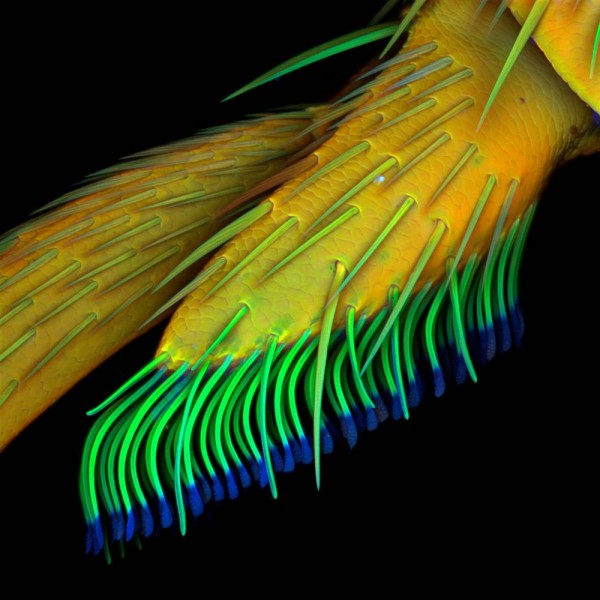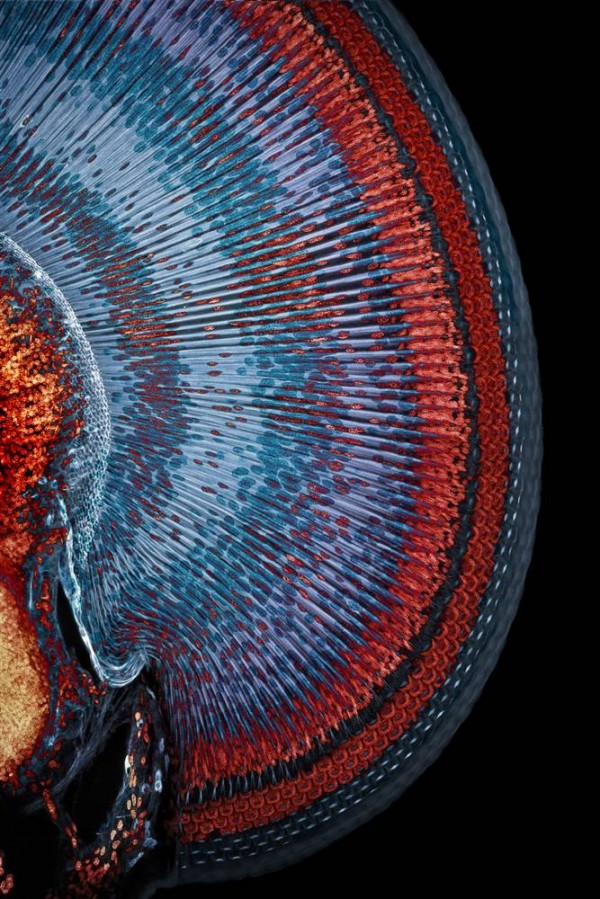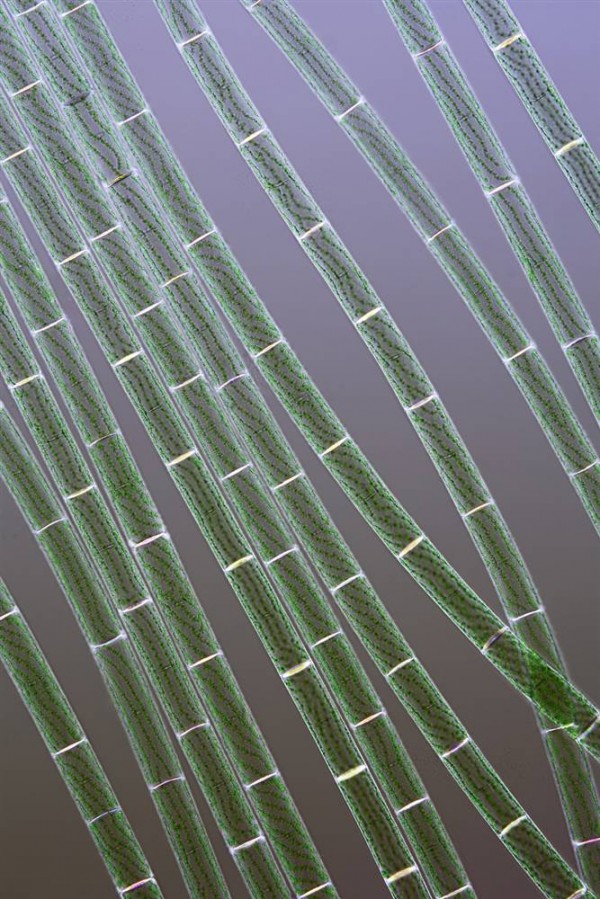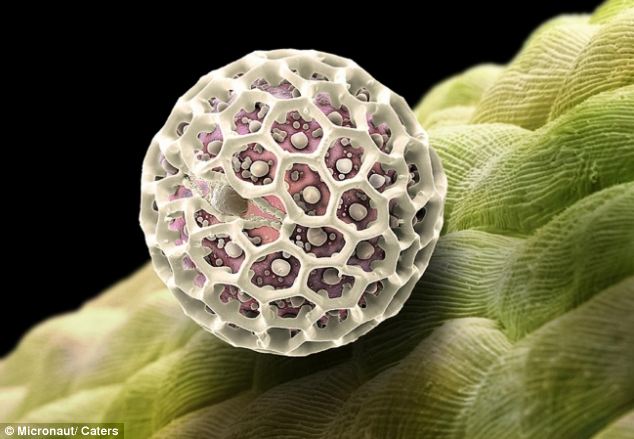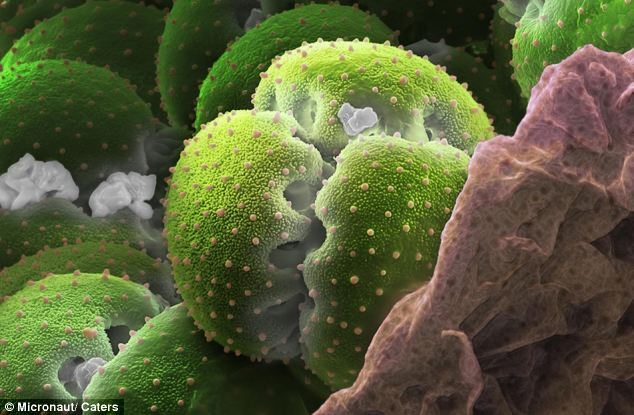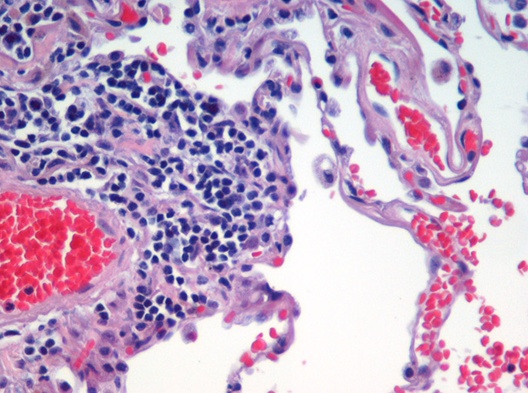From a rusty microcanyon to a tie-dye leaf, these stunning images from the 2011 FEI Owner Image Contest use colour in inventive ways to transform snapshots from the microscopic world. New Scientist rounds-up the winners, runners-up and other striking entries.

Microcanyon
What appears as a deep crevasse is actually a mere microscopic crack in steel. Having subjected the metal to the rigours of a bend test, Martina Dienstleder of the Austrian Centre for Electron Microscopy and Nanoanalysis in Graz, decided that the results were pretty enough to photograph. Her colleague Manuel Paller then coloured the image with rusty tones and added a cloud-dotted sky to complete the look. The shot won the top prize.
(Image: Martina Dienstleder and Manuel Paller)

Alveoli network
A dense network of blood vessels in the alveoli enables the quick transfer of oxygen to the bloodstream in the lungs. Here blood cells can be seen squeezing through the narrow capillaries. Taken by professional science photographer Oliver Meckes, the image won second prize in the competition.
(Image: Oliver Meckes)

Supersized spider
An arachnophobe's worst nightmare, a spider looms large in this image, taken using a scanning electron microscope. Also by Oliver Meckes. The colourised photo highlights the goliath's beady eyes and delicate hairs at 50-times magnification.
(Image: Oliver Meckes)

Clam shell mite
Looking like a vibrant clam shell underwater, this vibrant image by Angelika Reichmann, also of the Austrian Centre for Electron Microscopy and Nanoanalysis in Graz, is actually a close-up of a mite's armoured body. Reichmann's colleague Margit Wallner coloured this photo, which claimed third prize.
(Image: Angelika Reichmann)

Polyflower
This colourful shot by nanotechnology researcher Luca Boarino of the National Institute for Meteorological Research in Torino, Italy, resembles a close-up of a psychedelic sunflower. The delicate texture was created using nanospheres of polystyrene resin. Applied to a silicone surface, capillary forces caused the spheres to crack as they dried, completing the flower look.
(Image: Luca Boarino)

Tie-dye leaf
These tattered fibres are not from a ragged tie-dyed T-shirt, but rather show an abstracted cross-section of a leaf's veins. The rainbow image was created by Daisy Lee and Craig Queenan at the Nano-Structural Imaging Lab of Bergen County Technical Schools in New Jersey.
(Image: Daisy Lee and Craig Queenan)

Glacial shell
The icy blue tones of this micrograph transform the hard surface of a seashell into a chiselled glacier. It was taken by Wesller Schmidt, a technician at Universidade Federal de Minas Gerais in Belo Horizonte, Brazil.
(Image: Wesller Schmidt)
Gallery Here
I think it's neat how several of the images are COMPLETELY not what you'd think they were on first glance.

